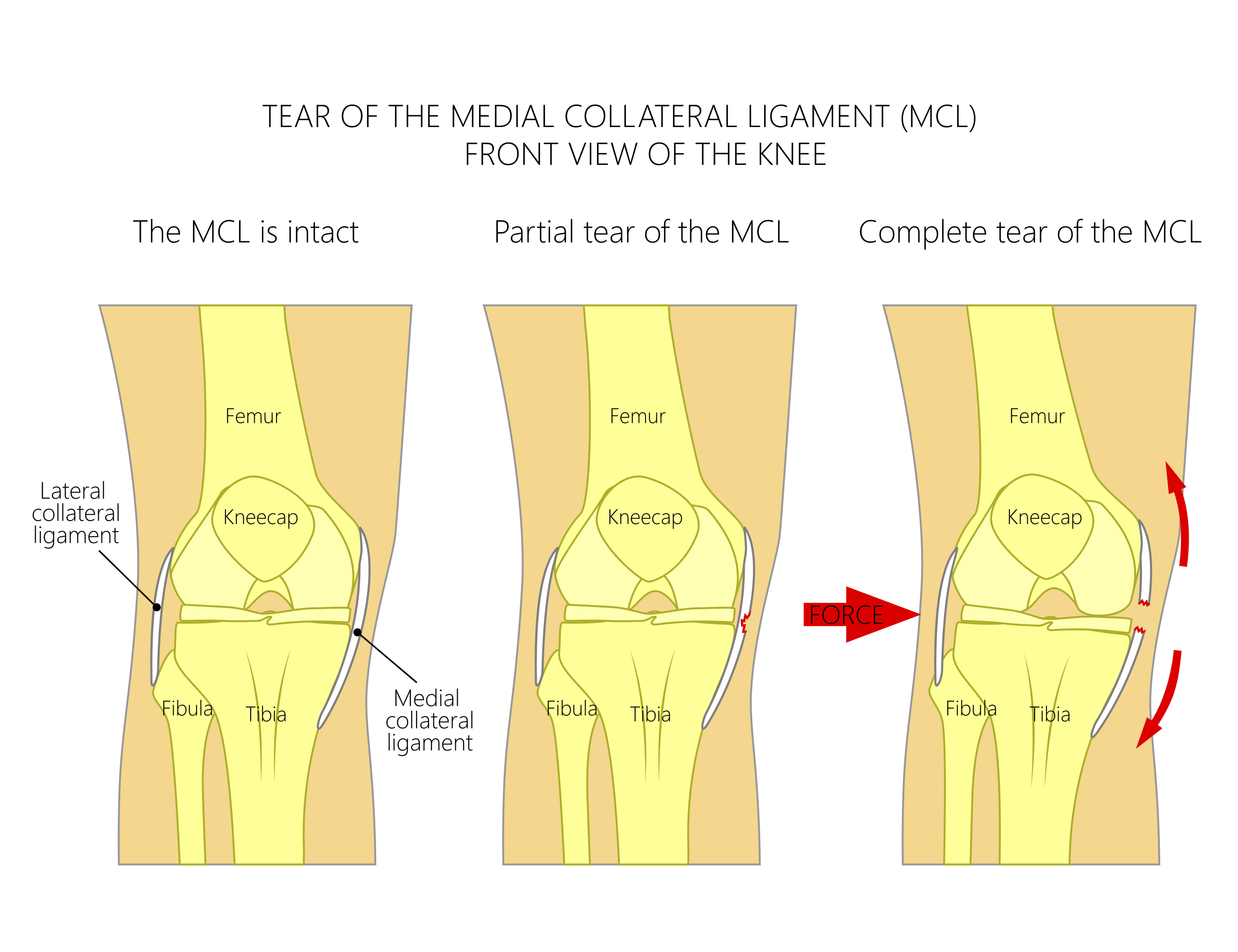What is a MCL injury?
The medial collateral ligament (MCL) is located on the inner part of your knee, but it’s actually outside the joint itself. Ligaments hold bones together and add stability and strength to a joint. The MCL connects the top of the tibia, or shinbone, to the bottom of the femur, or thighbone. The MCL can be injured by over stretching the ligament, or tearing it. Dr. Austin Chen, orthopedic knee and sports surgeon in Boulder, Colorado, specializes in diagnosing and treating MCL injuries.

What is the cause of a MCL injury?
An injury of the MCL is not as common as the ACL, but can occur. It is usually caused by a direct blow to the outer part of the knee, which is common in contact sports such as soccer and football. This injury is often called an MCL sprain.
MCL Injuries come in three types of classifications:
- A grade 1 MCL injury is the least severe. It means that your ligament has been stretched but not torn.
- A grade 2 MCL injury means that your ligament has been partially torn. This usually causes some instability in your knee joint.
- A grade 3 MCL injury is the most severe type of ligament injury. It occurs when your ligament has been completely torn. Joint instability is common in a grade 3 MCL sprain.
What are the symptoms of a MCL injury?
The following are the symptoms of a MCL injury:
- Swelling of the knee
- Locking and/or catching in the knee
- Popping sound upon injury
- Pain and tenderness along the inner part of the knee
- Feeling that your knee is going to give when weight is set upon it
What are the treatment options for MCL injuries?
Rarely, an injury to the MCL will require surgery. Dr. Austin Chen will most always start with non surgical treatment methods such as ice, rest, elevation, a brace or crutches. If the injury does not respond, or if the MCL is torn in such a way that it cannot heal itself, Dr. Chen may suggest a MCL reconstruction surgery.
